
Top 15 Theories in Urban Planning
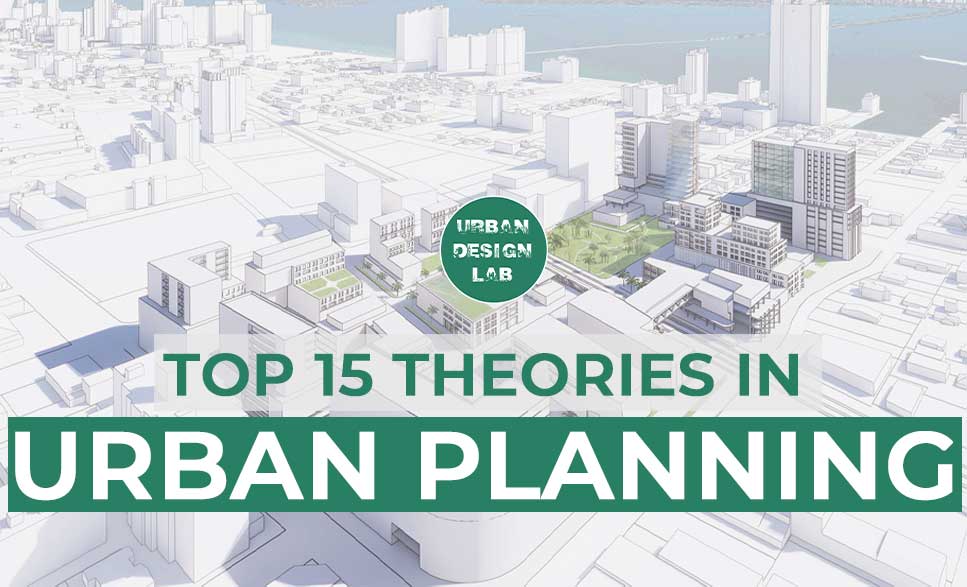
Urban planning is a discipline concerned with the design, management, and regulation of the built environment and the use of public space in urban areas. Over the years, various theories have emerged to guide and inform urban planning practices. Here are some of the key theories in urban planning:
1. The Garden City movement:
This theory, developed by Ebenezer Howard in the late 19th century, advocates for the creation of small, self-contained communities surrounded by greenbelts. The idea is to combine the best of rural and urban living, with a focus on sustainability, social equity, and a high quality of life.
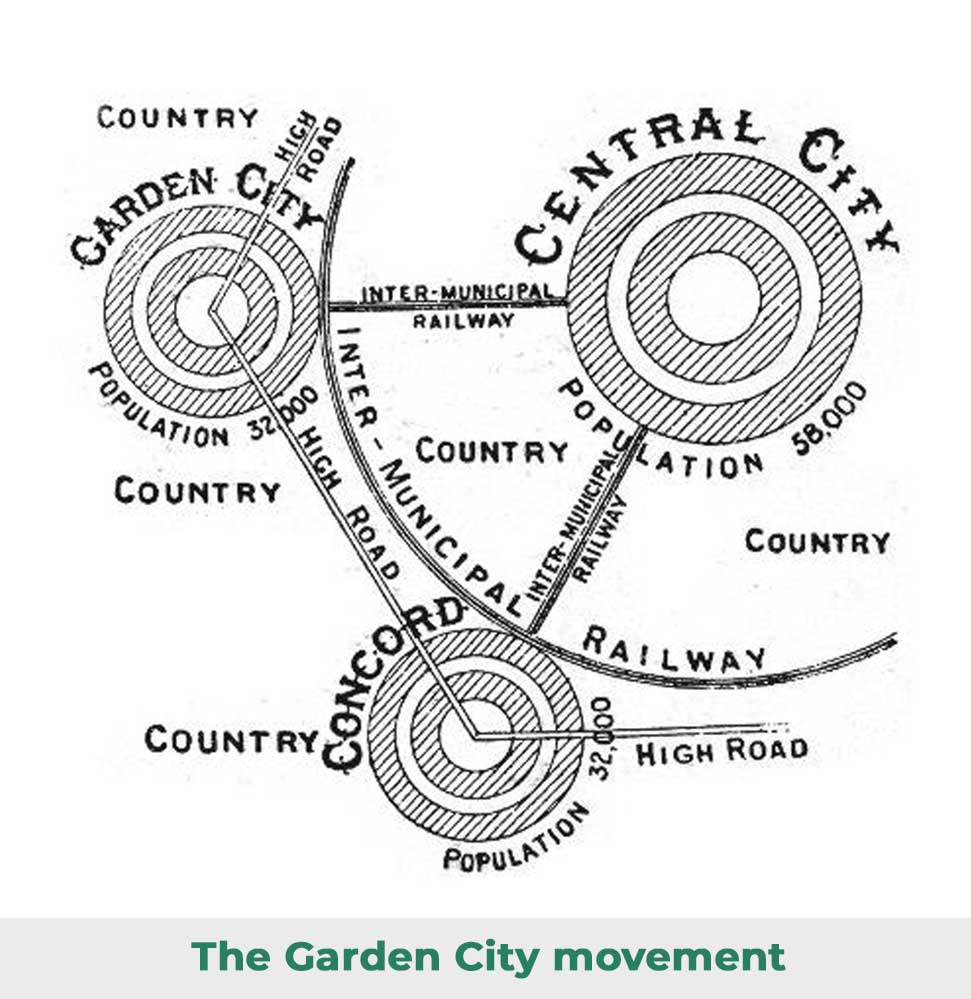
2. The Theory of the City:
This theory, developed by Chicago School sociologists in the early 20th century, posits that cities are organic, evolving entities that grow and change over time. The theory emphasizes the importance of understanding the social, economic, and physical factors that shape urban development.

3. The Concentric Zone Model:
This theory, developed by sociologist Ernest Burgess in the 1920s, proposes that cities are composed of a series of concentric zones, each with its own characteristics and functions. The model suggests that social and economic activity is more concentrated in the center of the city, with lower-income and disadvantaged populations living in the outer zones.
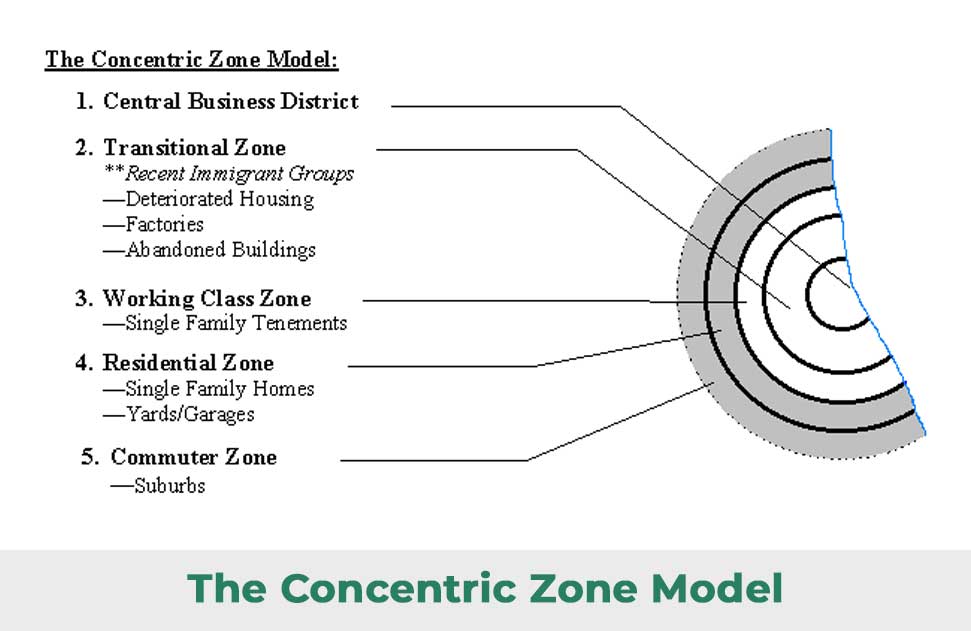
4. The Sector Model:
This theory, developed by Homer Hoyt in the 1940s, is similar to the Concentric Zone Model, but it divides the city into sectors rather than concentric zones. The model suggests that different land uses and population groups are organized in a radial pattern around the city center.
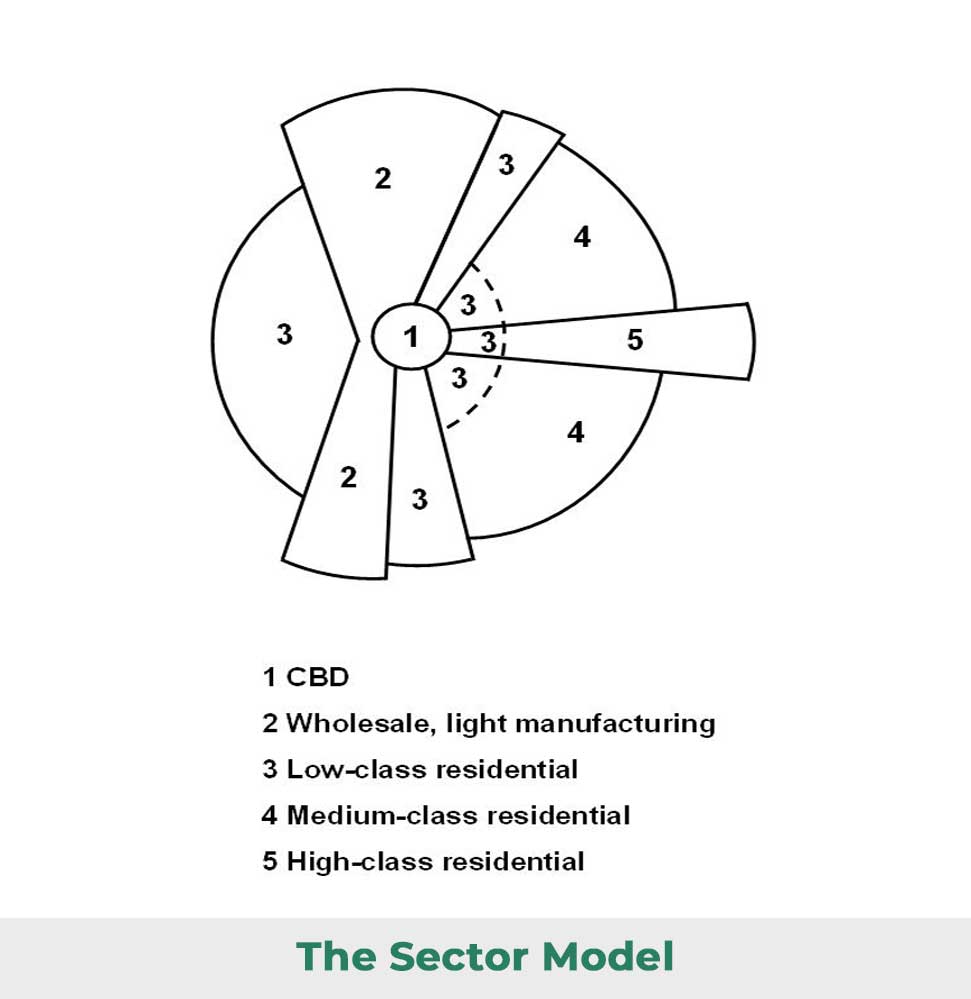
5. The Multiple Nuclei Model:
This theory, developed by Chauncy Harris and Edward Ullman in the 1950s, challenges the idea of a single central business district and proposes that cities have multiple centers of economic and social activity. The model suggests that cities are more complex and dynamic than the Concentric Zone and Sector models suggest.
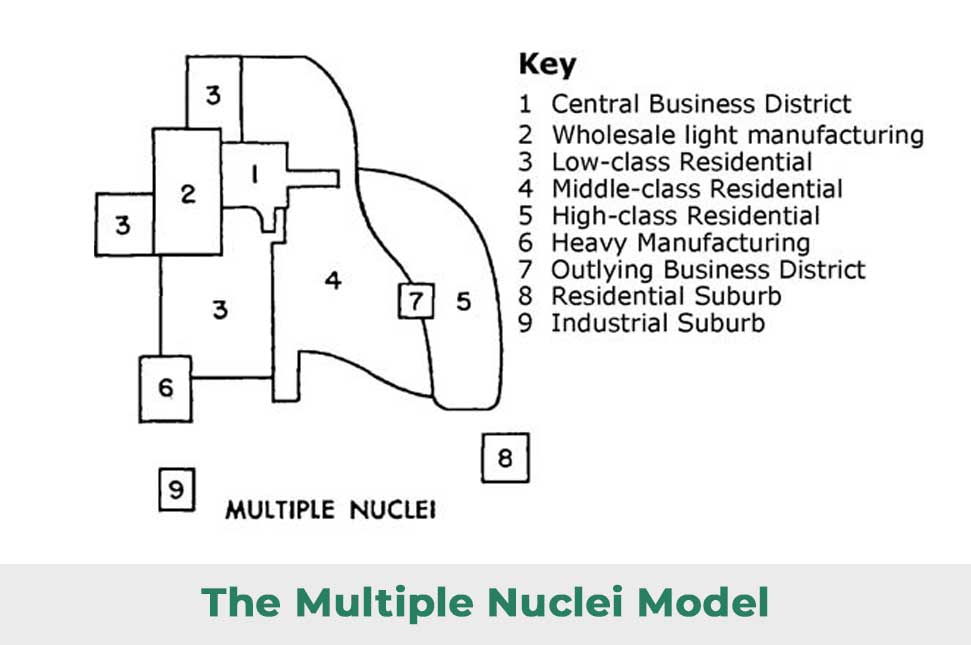
6. The Theory of Community Development:
This theory, developed in the 1960s, emphasizes the importance of community involvement and empowerment in the planning process. The theory advocates for a bottom-up approach to planning, where the needs and desires of local residents are taken into account.
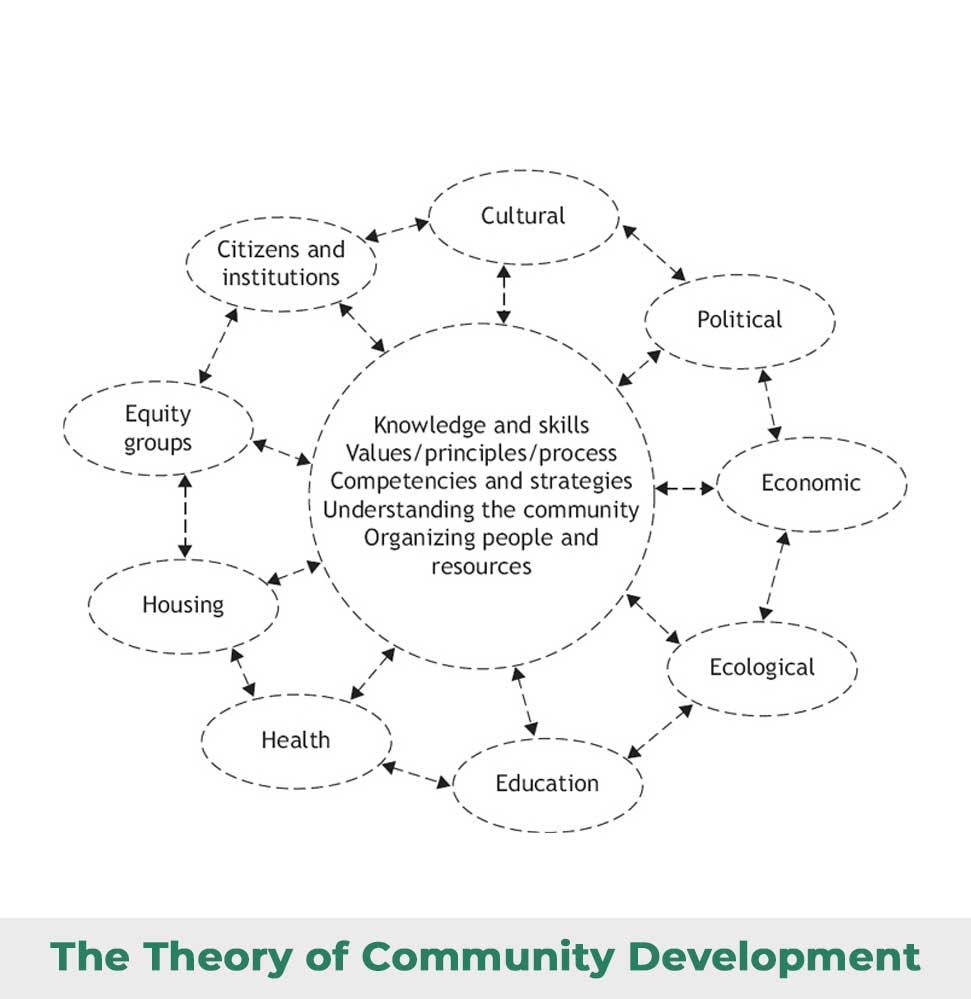
7. Right to the City
The right to the city is an idea and a slogan first proposed by Henri Lefebvre in his 1968 book Le Droit à la Ville.[1][2] This idea has been taken up more recently by social movements, thinkers, and certain progressive local authorities as a call to action to reclaim the city as a co-created space: a place for life detached from the growing effects that commodification and capitalism are proposed to have had over social interaction and the rise of posited spatial inequalities in worldwide cities throughout the last two centuries
The movement for the right to the city has developed as a response of social groups and civil society organizations in an attempt to ensure better access to and opportunities for everyone living in cities, especially the most marginalized and deprived sections. Social movements and organizations from across the world worked together to develop a World Charter on the Right to the City that is also supported by UNESCO and UN Habitat, among other agencies. This global movement has also led to mayors in different cities, independently and collectively, adopting charters to promote human rights in cities.
It includes, inter alia, the human rights to:
- Adequate housing;
- Water and sanitation;
- Basic services, including electricity;
- Work/livelihood;
- Food;
- Health and healthcare;
- Sustainable transport and energy;
- Education;
- A clean and a healthy environment;
- Social security;
- Equality, including gender equality;
- Information;
- Participation; and,
- Safety, security, privacy, and freedom from violence;
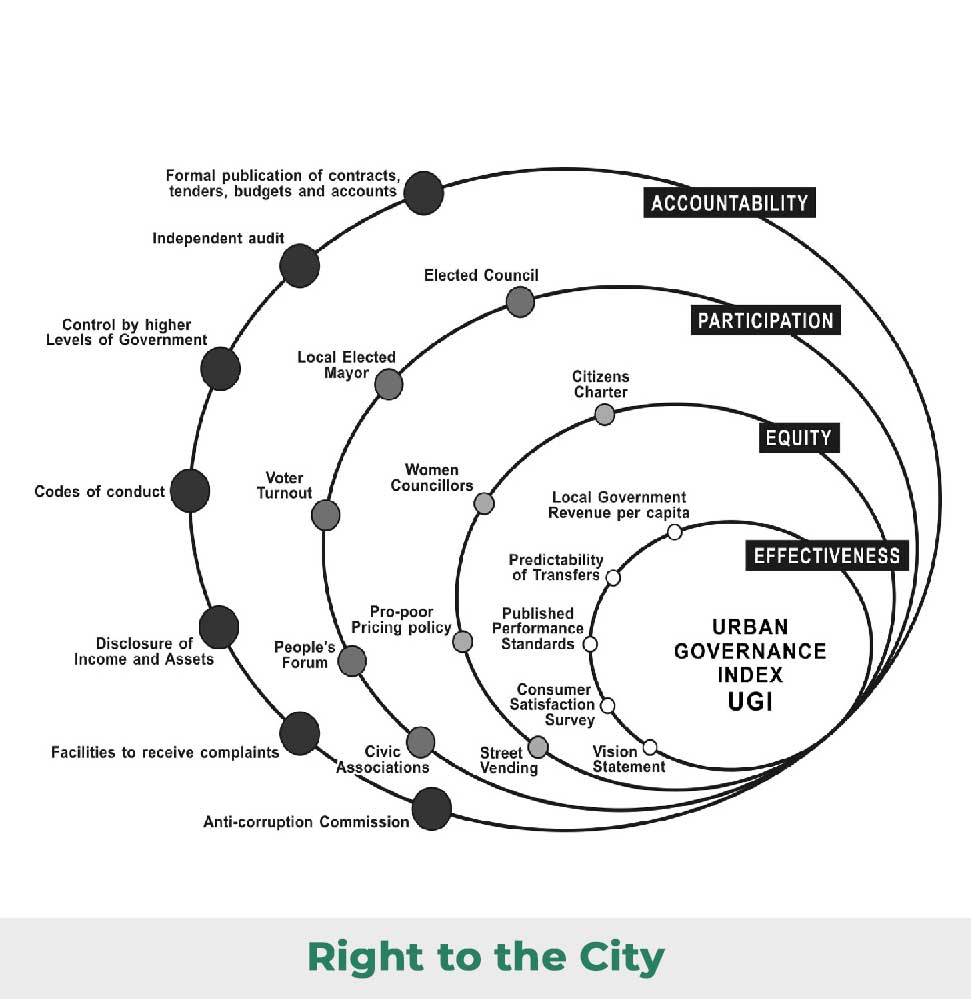
8. Range and Threshold:
The theory of Range and Threshold, developed by American geographers Brian Berry and Ronald Garrison in the 1960s and 1970s, is a framework for understanding the spatial structure of cities and the processes that shape urban growth and development.
According to the theory, cities are composed of a series of “ranges” or zones of land use, each with its own characteristics and functions. These ranges are separated by “thresholds,” or transition zones that mark the boundary between different ranges.
The theory of Range and Threshold is based on the idea that cities are not static, but rather dynamic and constantly evolving. As cities grow and change over time, new ranges and thresholds are created, while others disappear or shift. The theory suggests that the location and configuration of ranges and thresholds are influenced by a range of social, economic, and physical factors, including transportation networks, land values, and cultural and demographic patterns.
One key aspect of the theory is the concept of “range expansion,” which refers to the process by which new ranges are created as cities grow and expand outward. According to the theory, range expansion is driven by a combination of push and pull factors, including population growth, economic development, and changes in land use patterns.
The theory of Range and Threshold has been influential in shaping urban planning practices and policies, particularly in the areas of land use planning and transportation planning. It has also been applied to the study of urban form and structure, and has been used to analyze the impacts of various planning interventions on the spatial organization of cities.
Overall, the theory of Range and Threshold provides a useful framework for understanding the complex and dynamic processes that shape urban growth and development. It highlights the importance of considering the social, economic, and physical factors that influence land use patterns and the spatial structure of cities, and it provides a valuable tool for planners and policy makers working to shape the future of our cities.
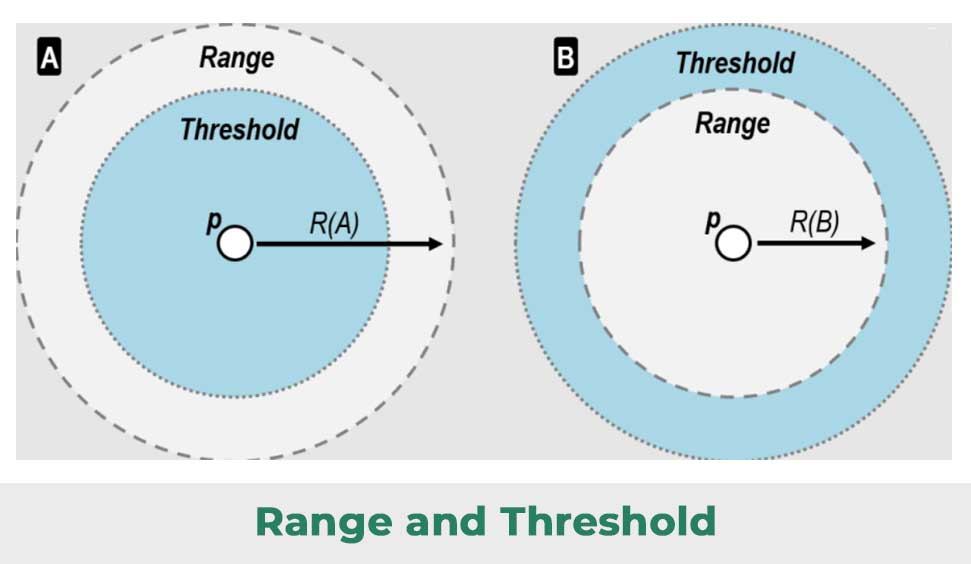
9. Rank Size Rule:
The theory of Rank Size Rule, developed by American linguist George Zipf in the 1930s, is a framework for understanding the distribution of population and economic activity across urban areas. According to the theory, there is a regular and predictable relationship between the size of a city and its ranking within a region or country.
The Rank Size Rule proposes that the population of a city is inversely proportional to its rank. This means that the largest city in a region will be about twice the size of the second largest city, three times the size of the third largest city, and so on. This pattern is thought to hold true for cities around the world, regardless of their cultural, economic, or political context.
The Rank Size Rule has been used to analyze and compare the size and distribution of cities in different regions and countries. It has also been used to study the growth and decline of cities over time, and to explore the factors that contribute to changes in city size and ranking.
One of the key insights of the Rank Size Rule is that cities do not grow or decline in isolation, but rather are part of a larger system of cities that are interconnected and interdependent. This means that changes in one city can have ripple effects on the size and ranking of other cities within the region.
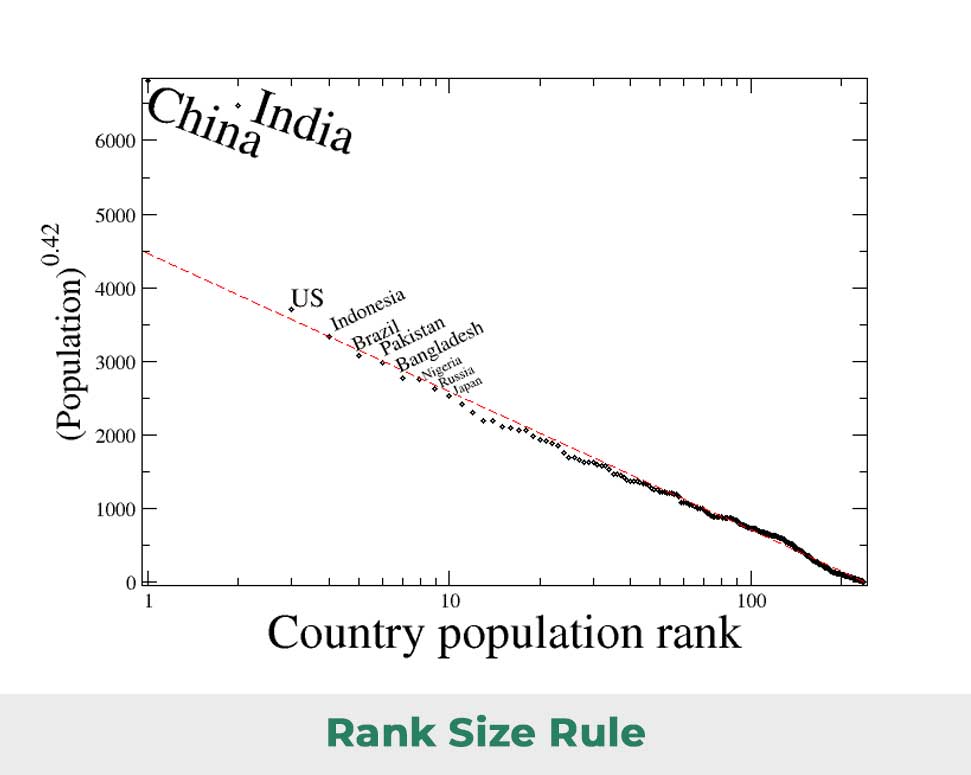
10. Bid Rent Theory
The theory of Bid Rent, developed by American economist William Alonso in the 1960s, is a framework for understanding the factors that influence the use and value of land in urban areas. According to the theory, the value of land is determined by the “bid rent” that different land uses are willing to pay for it.
The concept of bid rent is based on the idea that different land uses have different spatial requirements and are willing to pay different amounts for land depending on its location and accessibility. For example, a high-density residential development may be willing to pay more for land in a central location with good access to transportation and amenities, while a low-density residential development may be willing to pay less for land in a less accessible location.
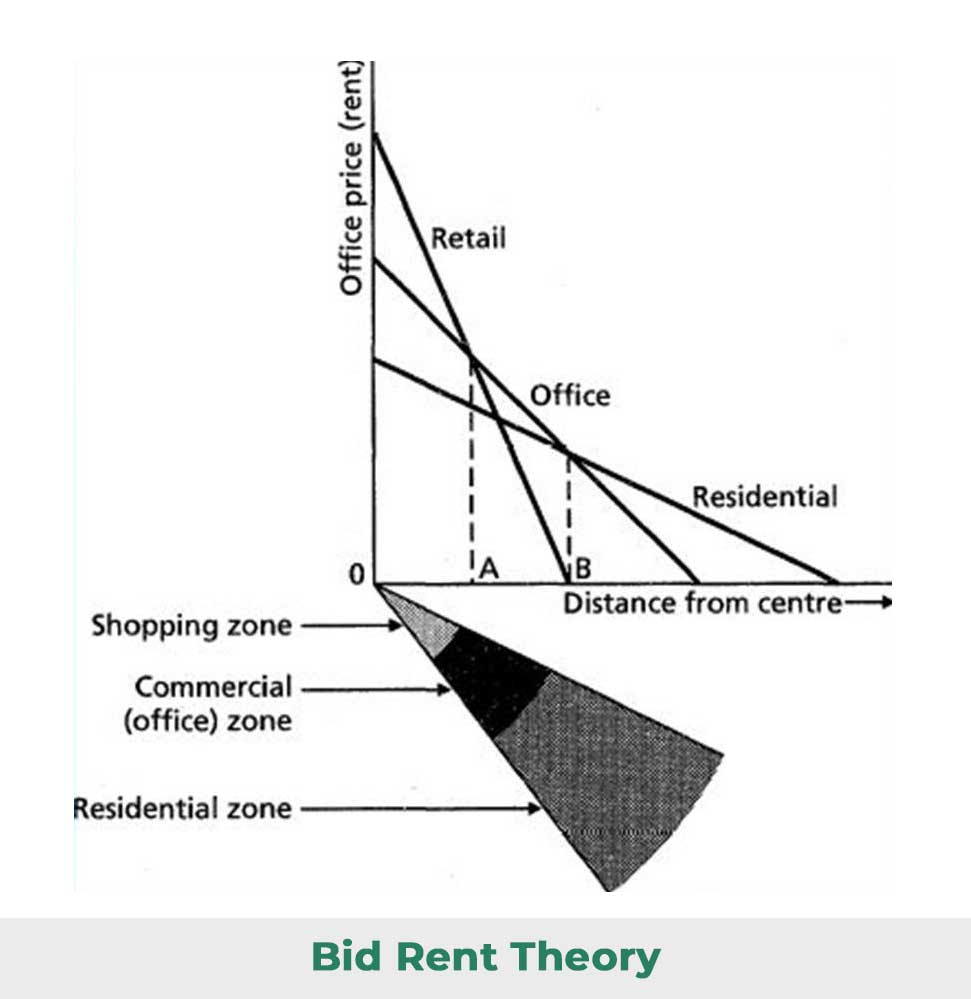
11. Central Place Theory
The Central Place Theory is a framework for understanding the spatial distribution of cities and the factors that influence the location and size of urban centers. Developed by German geographer Walter Christaller in the 1930s, the theory proposes that cities are organized in a hierarchical pattern, with larger cities serving as centers for the surrounding smaller towns and villages.
According to the Central Place Theory, the size and location of a city is determined by its “market area,” or the geographical region it serves as a center for goods and services. Larger cities are thought to have larger market areas and to serve a greater number of smaller settlements, while smaller cities are thought to have smaller market areas and to serve a smaller number of settlements.

12. Theory of Creative Class
The Theory of Creative Class, developed by American economist and urbanist Richard Florida in the early 2000s, is a framework for understanding the role of creativity and innovation in driving economic growth and development in cities. According to the theory, cities that are able to attract and retain a talented and creative workforce will be more successful in attracting new businesses, generating new ideas, and driving economic growth.
Florida defines the creative class as “professionals, knowledge workers, and creative people” who work in fields such as science, technology, engineering, the arts, and design. He argues that the creative class is a key driver of economic development, as they are more likely to generate new ideas, start new businesses, and drive innovation and growth.
The Theory of Creative Class suggests that cities that are able to attract and retain a large and diverse creative class will be more successful in attracting new businesses, generating new ideas, and driving economic growth. According to Florida, the key factors that attract the creative class to cities include a diverse and tolerant culture, a high quality of life, and a vibrant and dynamic urban environment.

13. Theory of Ladder of citizen participation
The theory of Ladder of Citizen Participation, developed by American social scientist Sherry Arnstein in the 1970s, is a framework for understanding the different levels and forms of citizen engagement in the planning and decision-making processes. According to the theory, citizen participation can take many different forms, ranging from non-participation and manipulation to partnership and citizen control.
Arnstein’s Ladder of Citizen Participation consists of eight rungs, each representing a different level of citizen engagement:
- Non-participation: This is the lowest level of citizen engagement, where citizens are not involved in the decision-making process at all.
- Manipulation: This is the next level up, where citizens are given the impression of participation, but their input is not genuinely considered or valued.
- Therapy: This level involves providing citizens with a platform to vent their frustrations or concerns, but no real power or influence.
- Informing: This level involves providing citizens with information about a decision or process, but not allowing them to shape or influence the outcome.
- Consultation: This level involves actively seeking input from citizens, but the final decision remains with the authorities.
- Placation: This level involves incorporating some citizen input into the decision-making process, but the authorities retain the final say.
- Partnership: This level involves a more collaborative approach, where authorities and citizens work together to make decisions and solve problems.
- Citizen Control: This is the highest level of citizen engagement, where citizens have the final say in decision-making and hold authorities accountable for their actions.
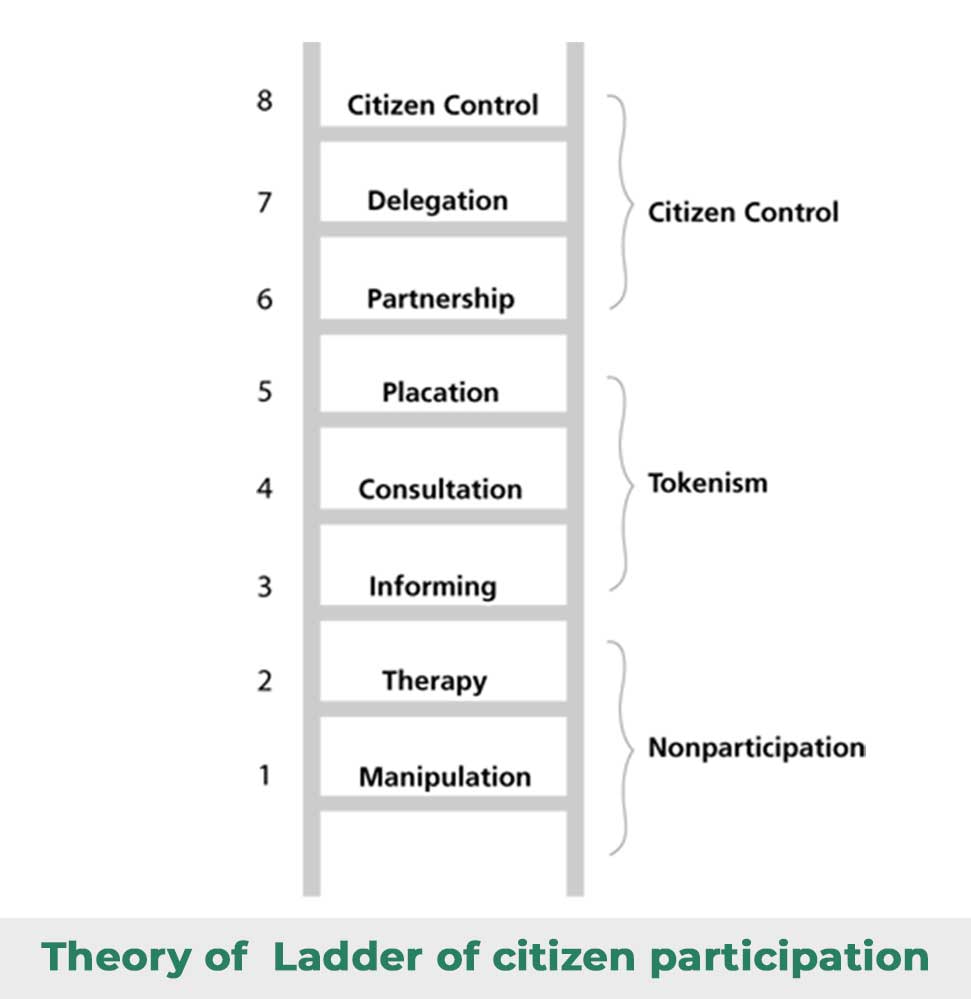
14. Theory of Broken Window
The Broken Window theory, first proposed by James Q. Wilson and George Kelling in 1982, suggests that visible signs of crime, anti-social behavior, and neglect in a community can contribute to an increase in these types of behaviors. The theory is based on the idea that if a window is broken and left unrepaired, people walking by will get the impression that no one cares and that no one is in charge. This can lead to more windows being broken and more vandalism and crime occurring in the area.
The theory has been influential in shaping policing strategies, particularly in the areas of community policing and problem-oriented policing. According to the theory, addressing small problems, such as graffiti and vandalism, can help prevent more serious crimes from occurring. This approach focuses on the maintenance of order and the creation of a sense of community ownership and responsibility.
One of the key insights of the Broken Window theory is that people are more likely to follow the rules and act prosocially when they feel that their community is well-maintained and that their actions have an impact on their environment. Conversely, when people feel that their community is ignored or neglected, they may be more likely to engage in anti-social behavior.

15. Theory of Drive in Culture
The Theory of Drive in Culture, developed by sociologist Gerard Saucier, proposes that human behavior is motivated by two basic drives: the drive for autonomy and the drive for relatedness. These drives are thought to be universal and to influence all aspects of human life, including cultural and social behaviors.
According to the Theory of Drive in Culture, different cultures may prioritize these drives differently, leading to variations in cultural behaviors and norms. For example, a culture that values autonomy may place a greater emphasis on individualism and self-reliance, while a culture that values relatedness may place a greater emphasis on community and interdependence.
The Theory of Drive in Culture has been influential in understanding how cultural values and behaviors are shaped by basic human needs. It offers a useful perspective on how different cultures may prioritize and express these drives in different ways, and how these drives may influence cultural practices and norms.
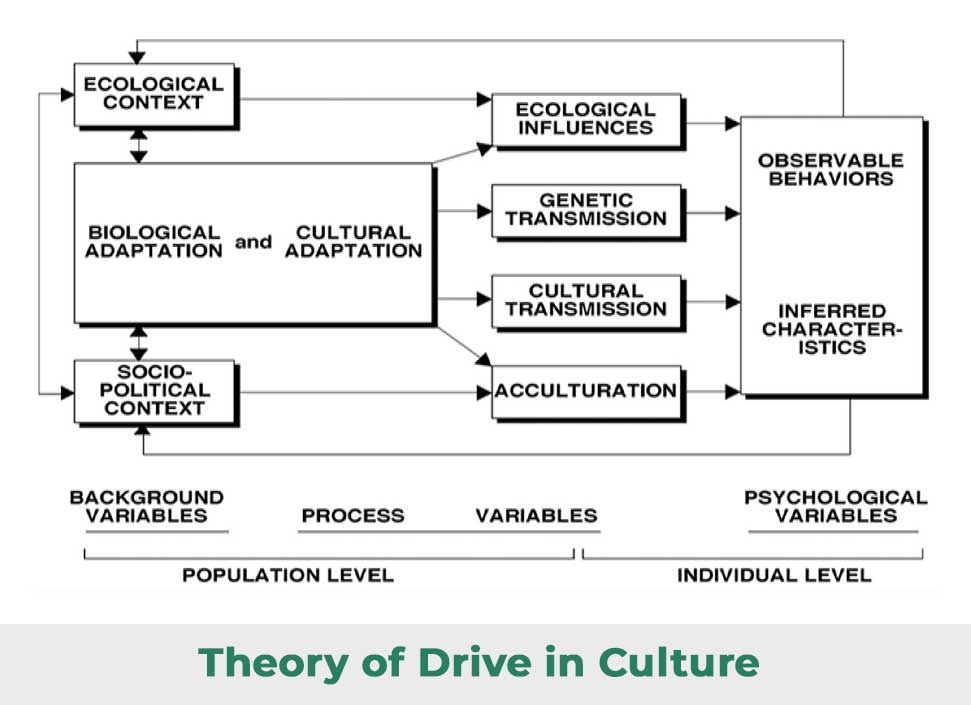
In conclusion, the theories discussed above are just a few examples of the various frameworks that have been developed to guide and inform urban planning practices. While each theory has its own strengths and limitations, they all provide valuable insights into the complexities of urban life and the challenges of designing and managing cities in a sustainable and equitable way.

Urban Design Lab
About the Author
This is the admin account of Urban Design Lab. This account publishes articles written by team members, contributions from guest writers, and other occasional submissions. Please feel free to contact us if you have any questions or comments.
Related articles


Architecture Professional Degree Delisting: Explained

Periodic Table for Urban Design and Planning Elements


History of Urban Planning in India
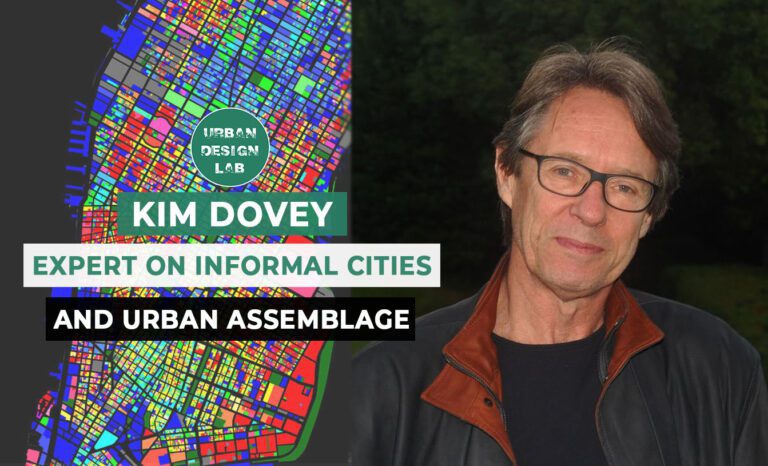
Kim Dovey: Leading Theories on Informal Cities and Urban Assemblage
UDL Illustrator
Masterclass
Visualising Urban and Architecture Diagrams
Session Dates
17th-18th January 2026

Urban Design Lab
Be the part of our Network
Stay updated on workshops, design tools, and calls for collaboration
Curating the best graduate thesis project globally!

Free E-Book
From thesis to Portfolio
A Guide to Convert Academic Work into a Professional Portfolio”
Recent Posts
- Article Posted:
- Article Posted:
- Article Posted:
- Article Posted:
- Article Posted:
- Article Posted:
- Article Posted:
- Article Posted:
- Article Posted:
- Article Posted:
- Article Posted:
- Article Posted:
- Article Posted:
- Article Posted:
Sign up for our Newsletter
“Let’s explore the new avenues of Urban environment together “


























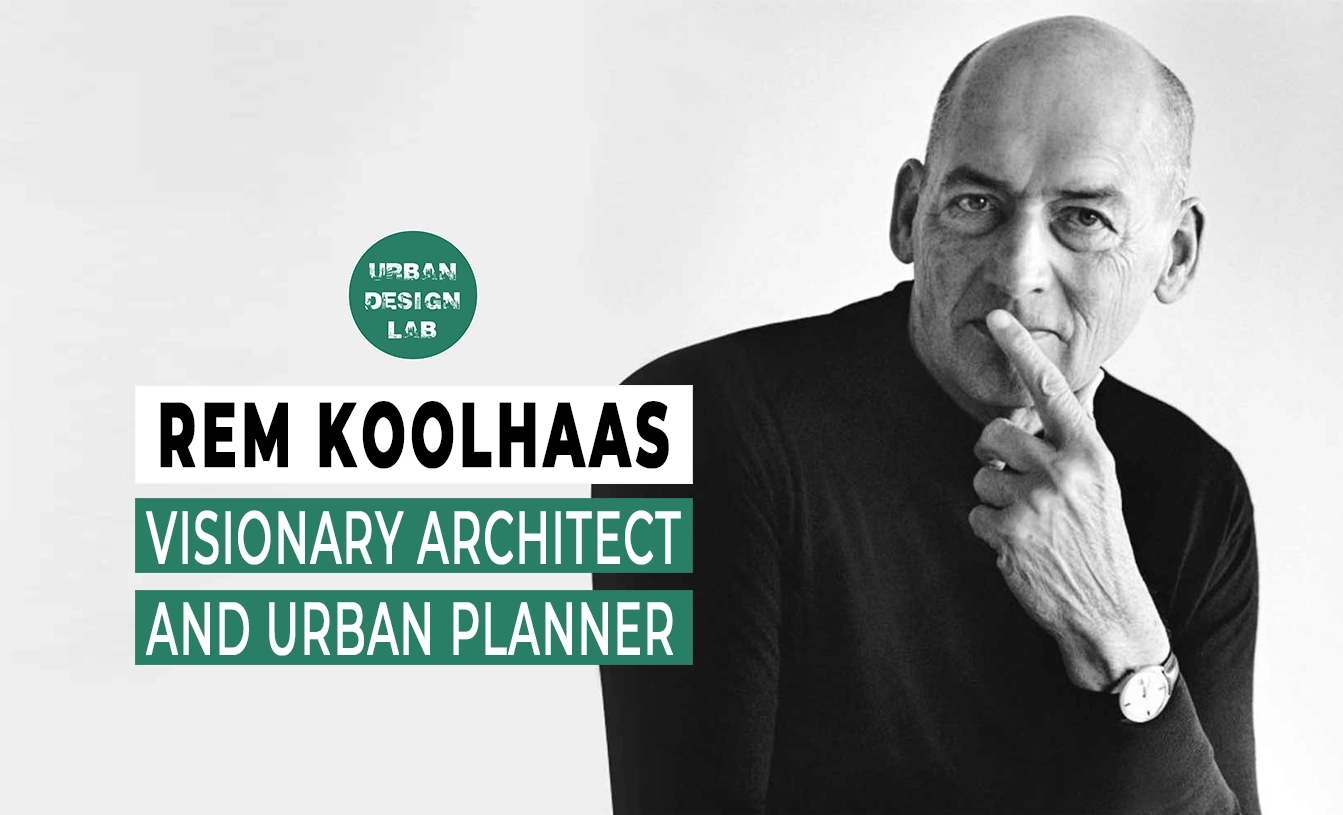





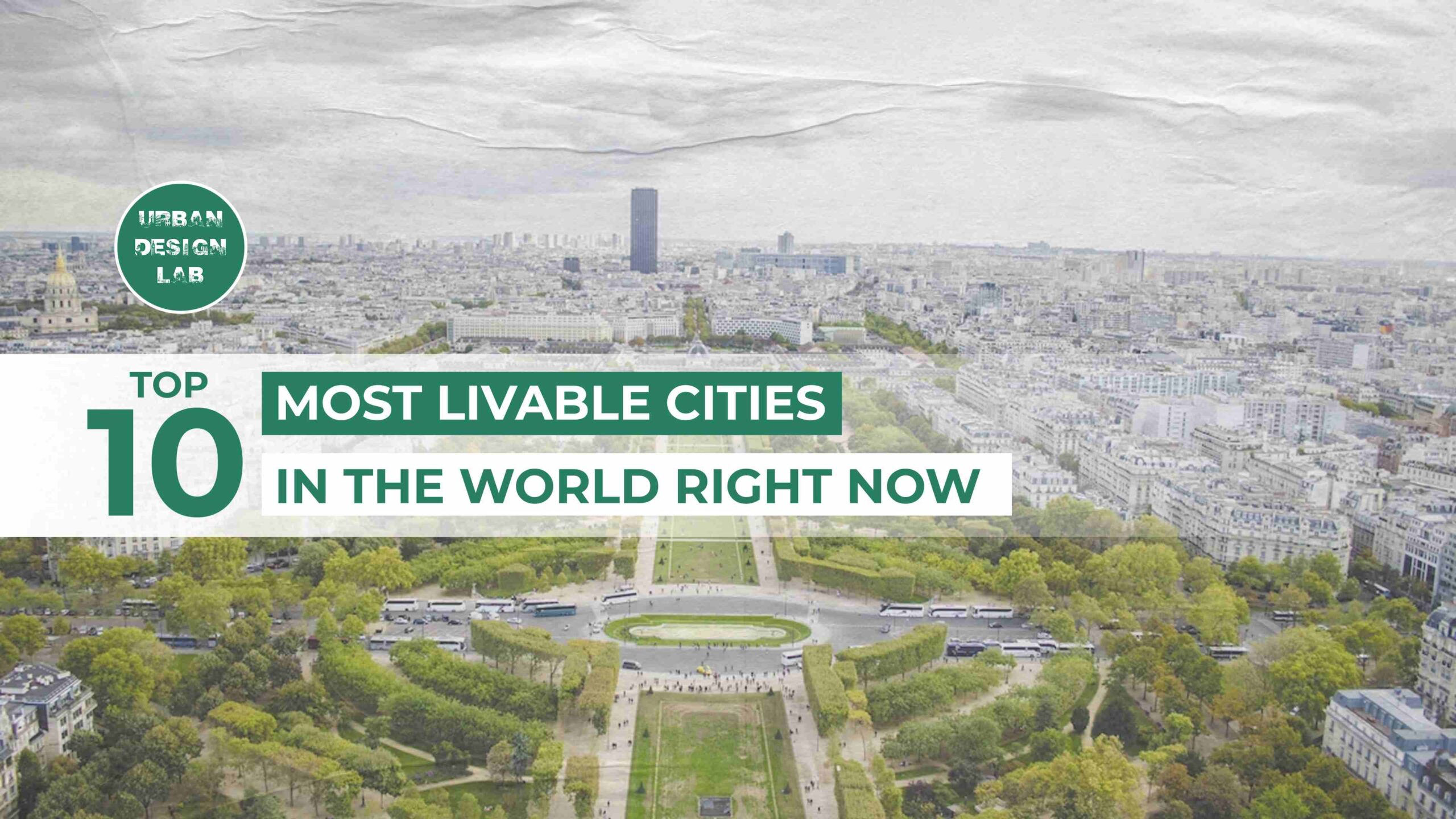
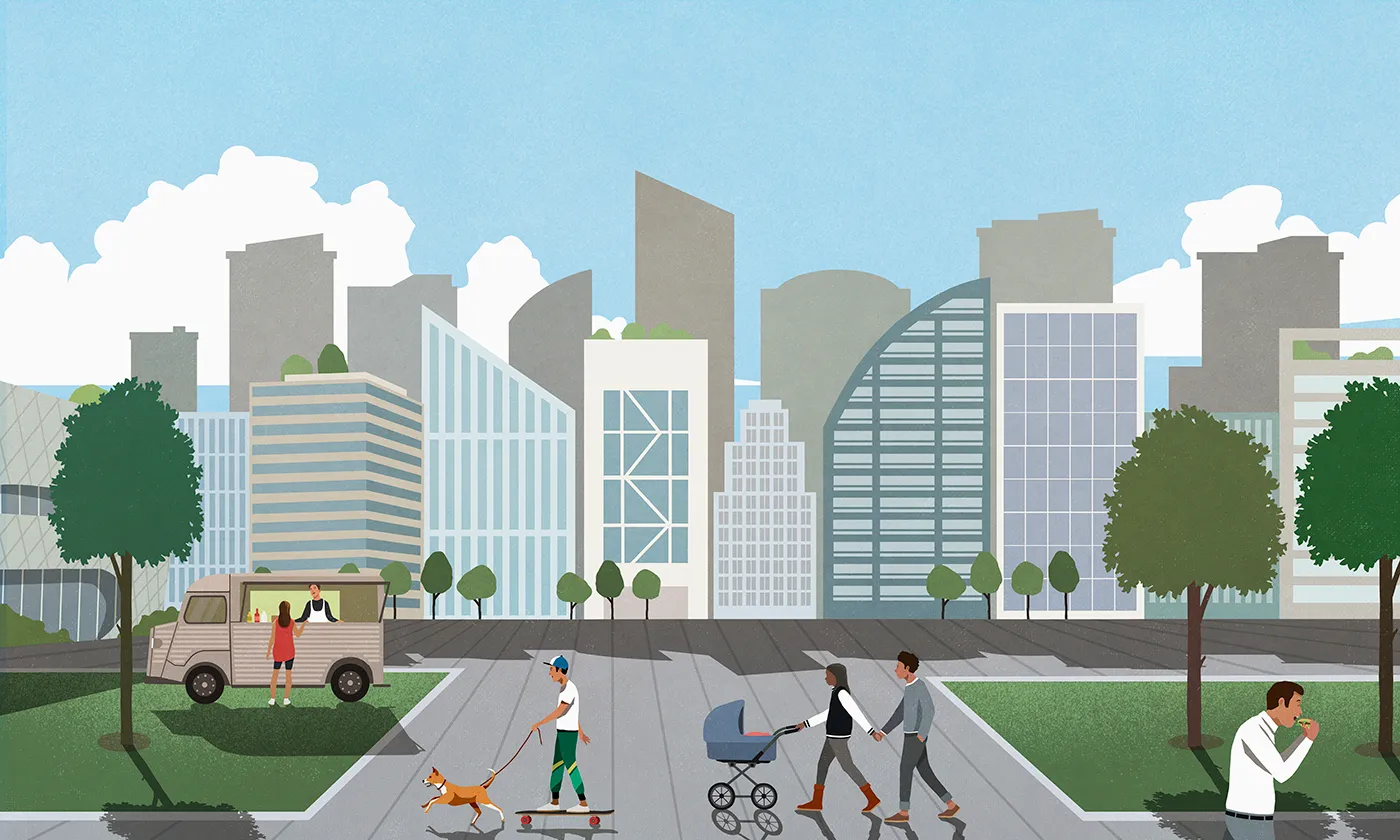

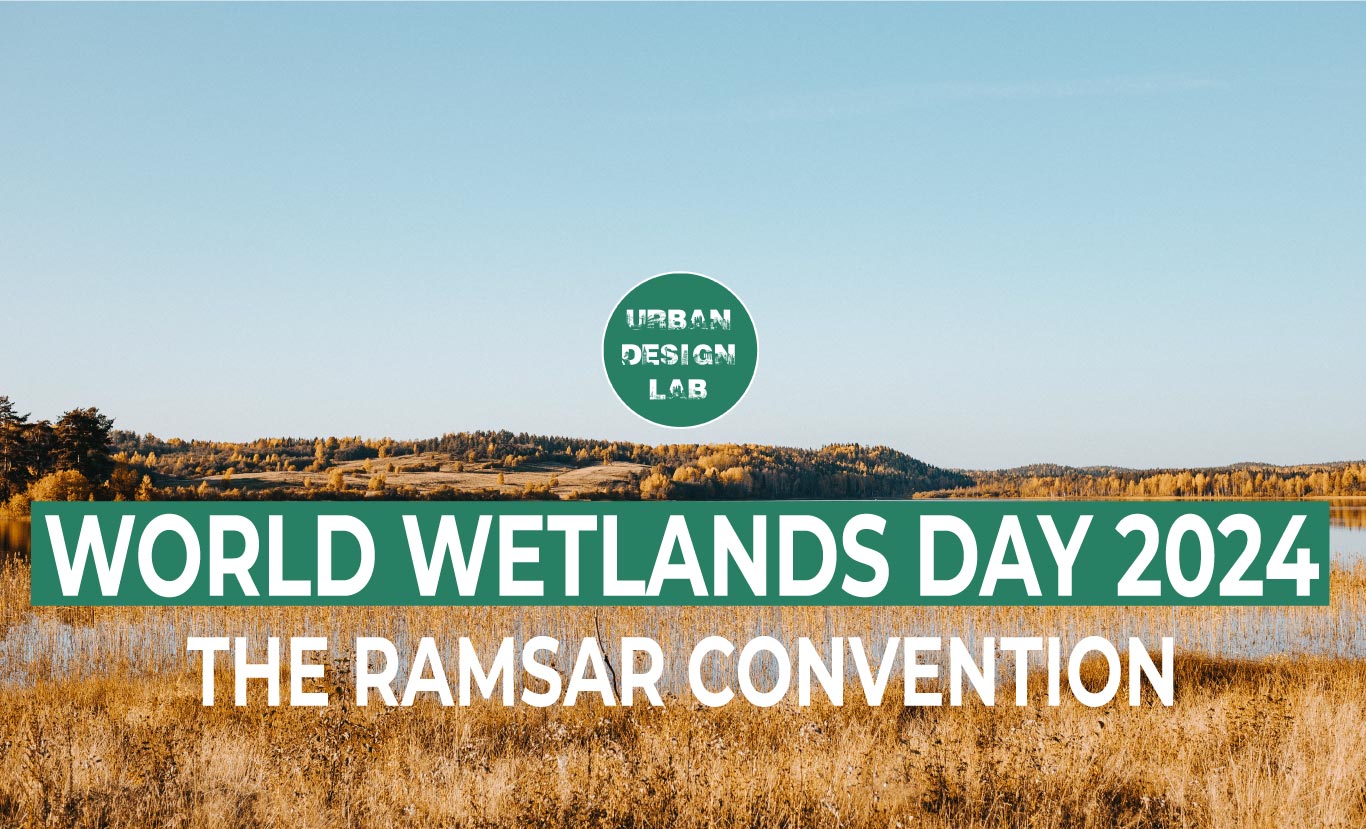

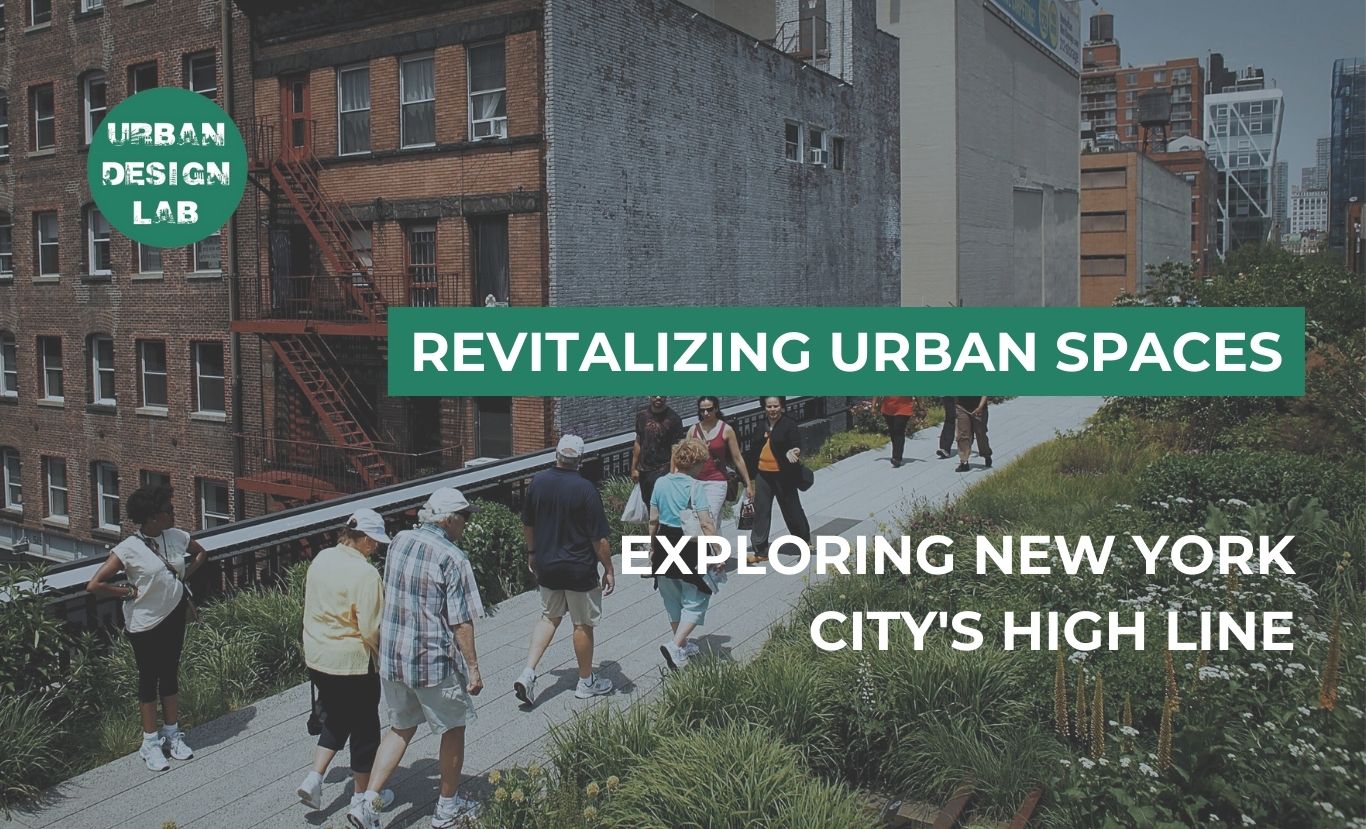
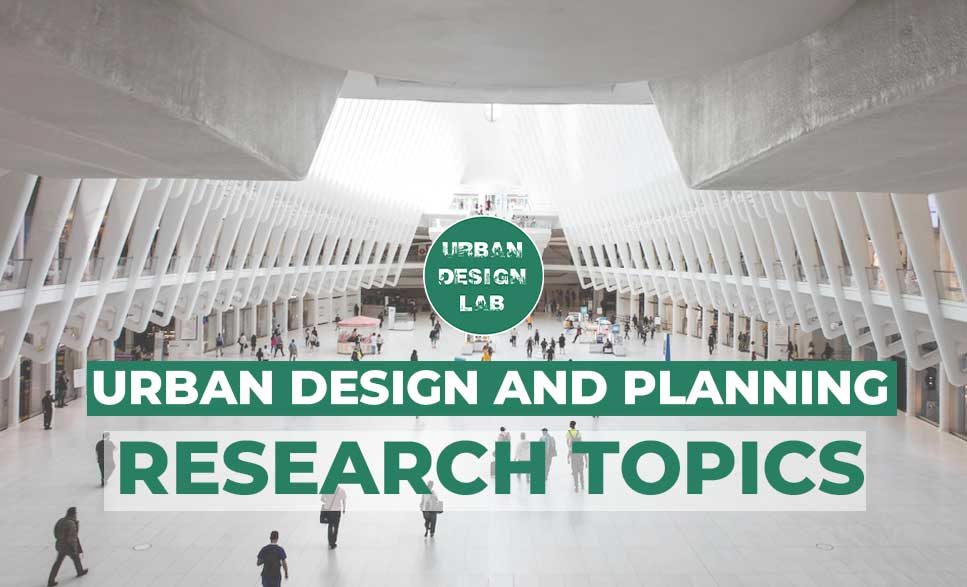
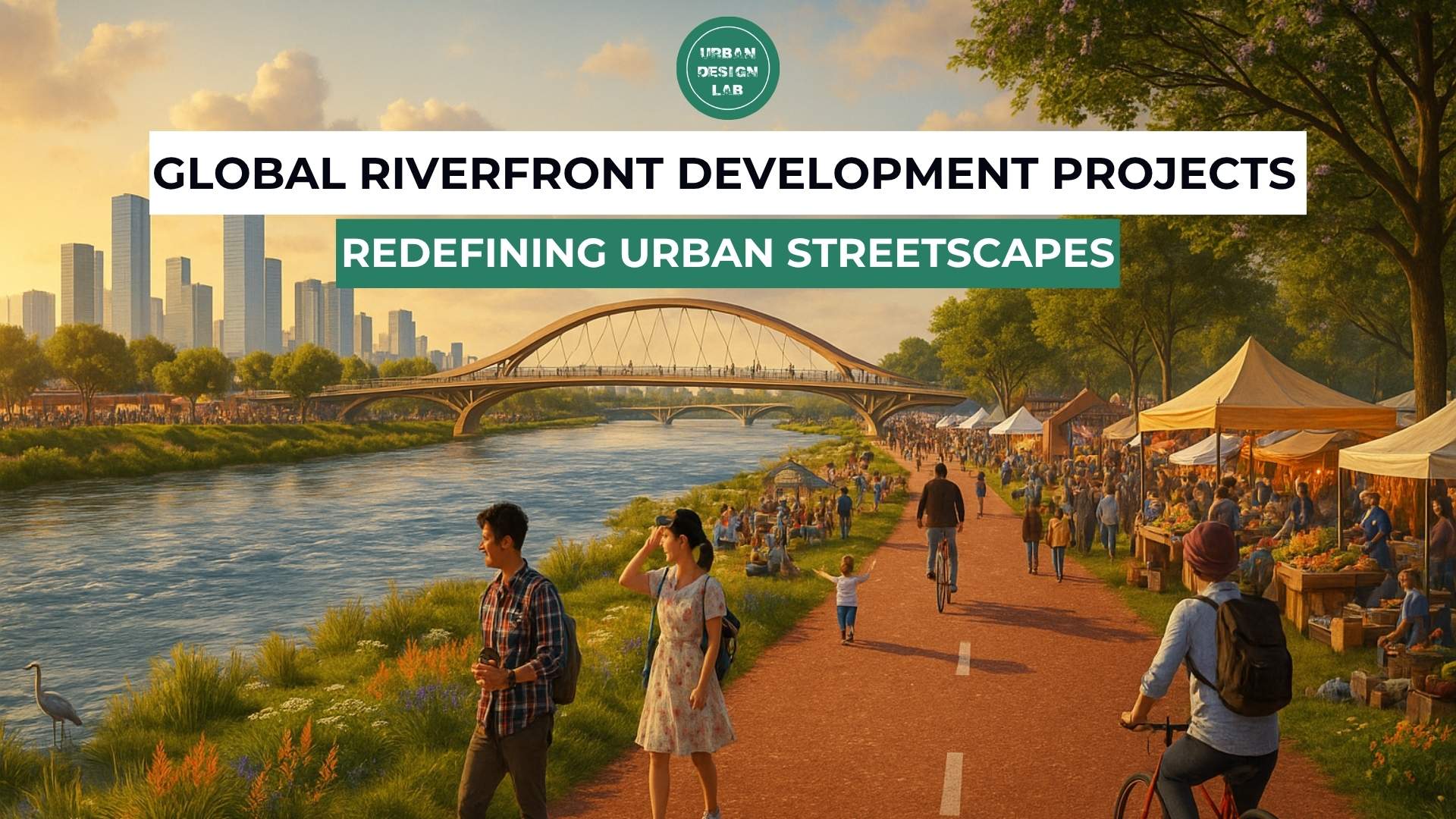

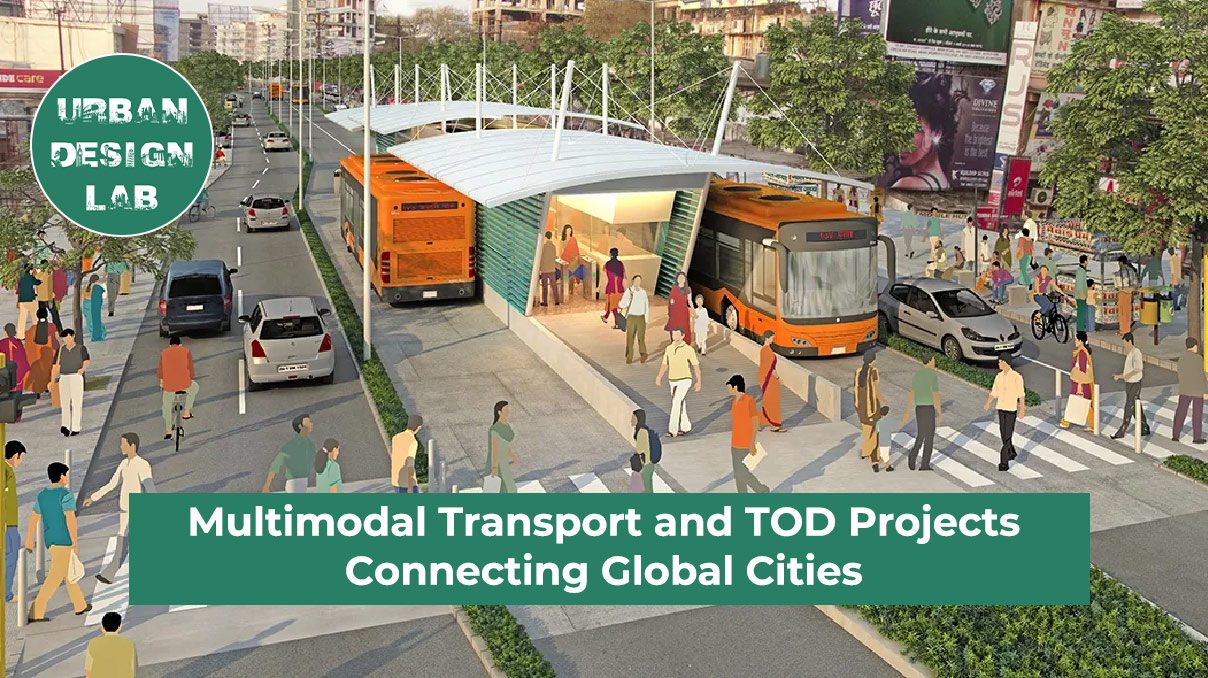


7 Comments
I love this theories of Urban Planning
this is great work thanks for the efforts put in
Thanks for sharing your info. I really appreciate your efforts and I will be waiting for your next write ups thank you once
again.
I have been immensely benefited by the document. It is precise and perfect to deliver the lecture and debate about the group of classmates.
It is high time that we link urban planning theories with current question of competitive advantage in regional and global contexts of supply chains.
I am impressed by the write up and feel grateful to the contributors.
Great! it gives general insight in the specific issue, Ùrban Planning Theories.
I appreciate the writer.
An essential article for deep seated knowledge on urban planning.
Highly thankful for the material and the information. Has really been helpful. Thanks a lot!